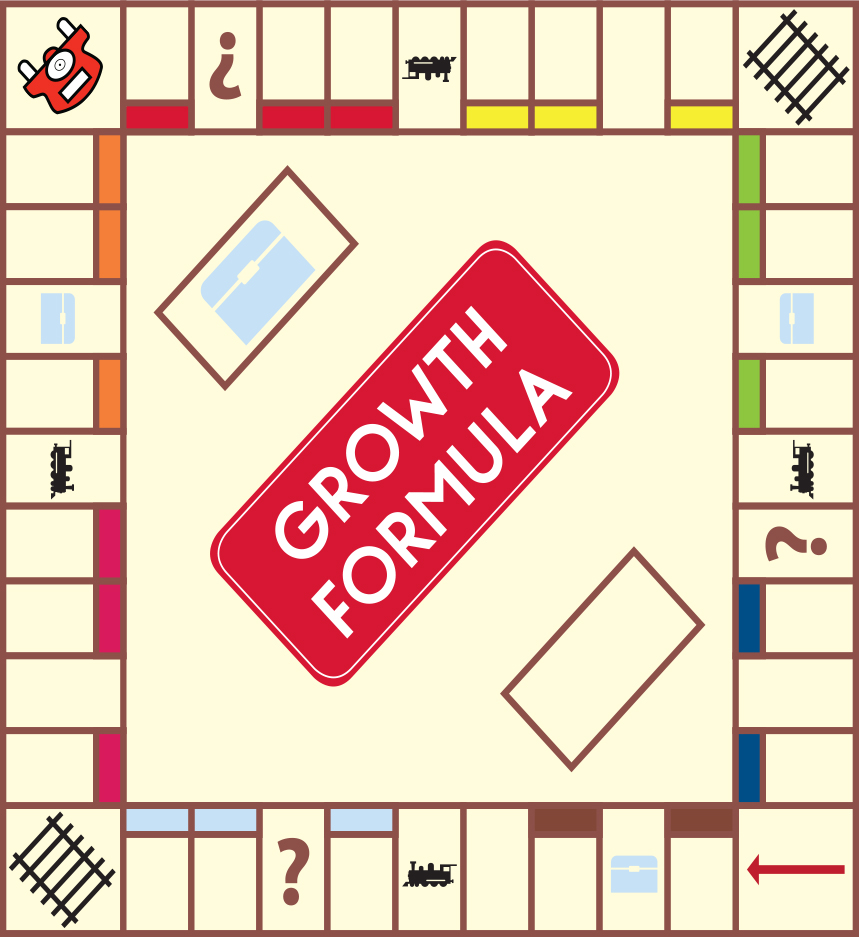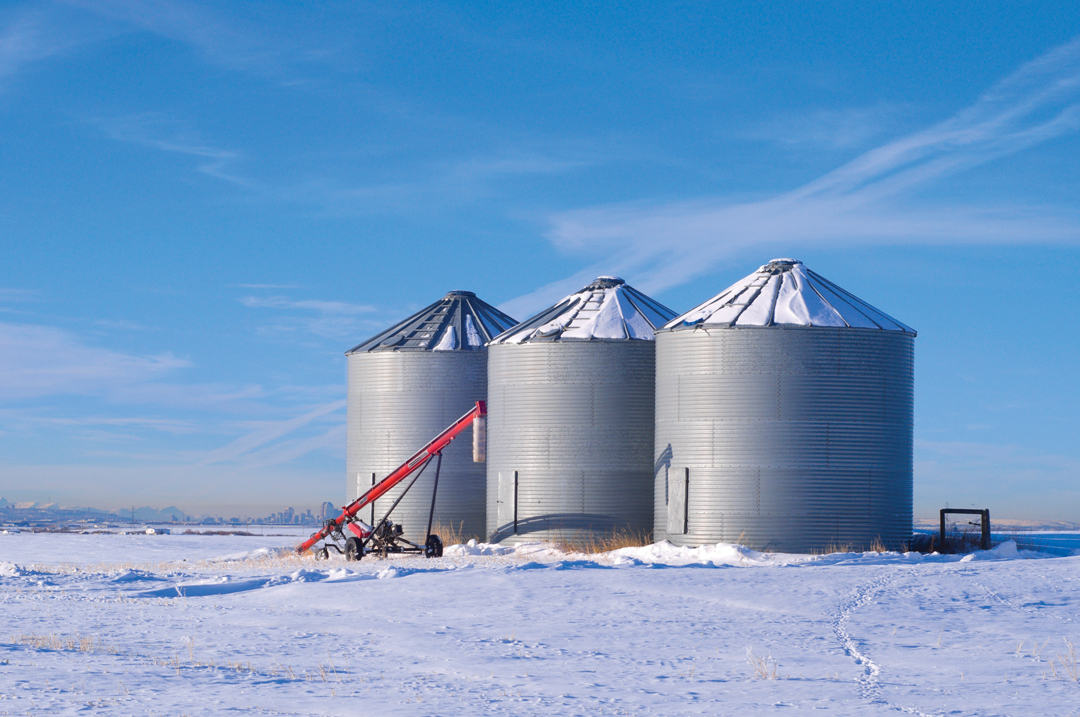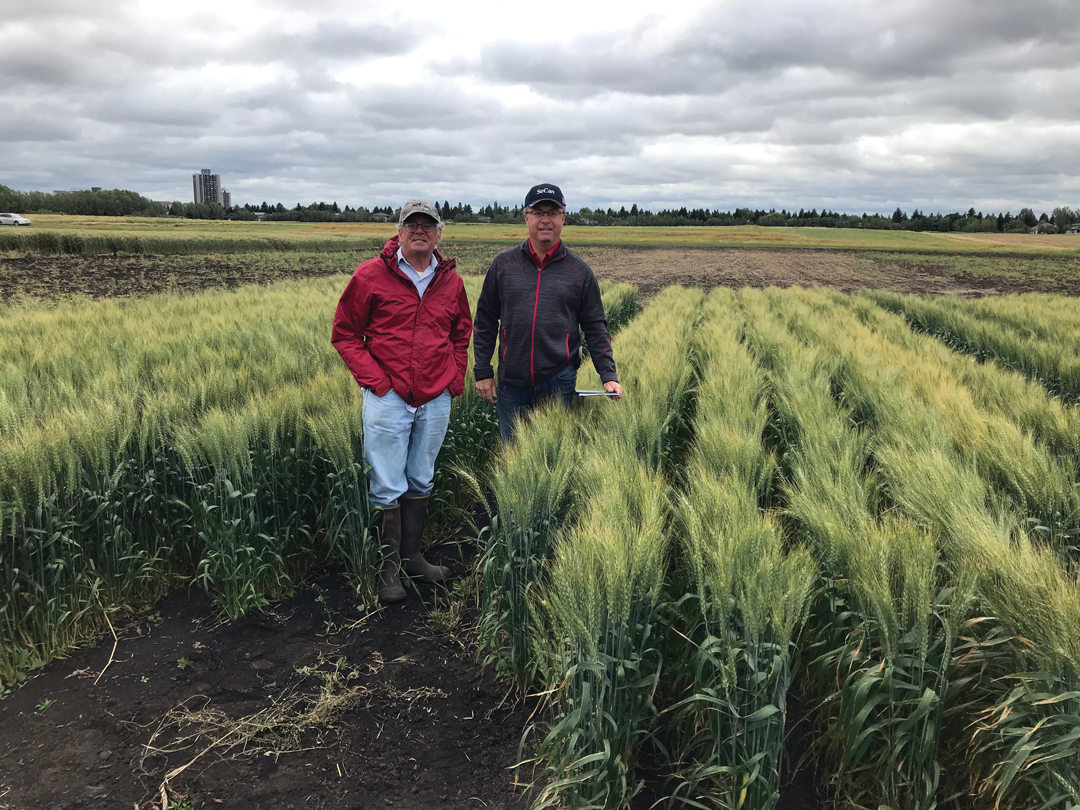GROWTH FORMULA
BY LEE HART • ILLUSTRATION BY ANDREA ESPINOZA
Expanding the farm isn’t something you do overnight and shouldn’t be done without planning. Making a profitable move requires being prepared when opportunity knocks by the quarter section, half section or beyond. Adding acres to family farm operations is most often a process of evolution, say farmers and agricultural lenders.
With decently productive land selling in the range of $300,000 to $500,000 per quarter section, or $2,000 to $3,000 per acre on average, many farmers don’t have the financial resources to purchase a neighbouring 5,000- or 10,000-acre farm in one fell swoop.
“There may be some circumstances where people have the equity to buy a whole farm, but it is usually more incremental growth,” said Melissa Reinhardt with Farm Credit Canada (FCC). Previously on the lending side, she is manager of business development for the Red Deer district.
“Producers more commonly are looking to buy a quarter or half section of land at a time,” she said. “But even that can easily be costing $500,000 or more, so it is a decision that requires thought and planning.”
When considering a land purchase, “producers need to crunch the numbers,” she said. “A good starting point is to look at farm numbers over the past five years. Knowing your cost of production is critical in decision making.”
Reinhardt advised running through the numbers with an agricultural lender or trusted advisor. “In many respects, it is straightforward, but a producer needs to consider a number of factors,” she said.
“You need to be prepared to act when the opportunity does come along, because it may not come back.”
—Kevin Serfas
How much is that purchase going to cost per acre, and how much debt can you afford? What is your current debt-to-equity ratio? What will it mean in terms of per-acre cost over a term if the purchase is financed? What will those additional acres require in terms of additional input, machinery, labour and operator costs?
“Two important areas producers need to look at when expanding are their operating or working capital as well as their sensitivity in terms of debt load,” she said.
“If the amount of operating capital is tight now, taking on more debt may not be a good idea. If you make a purchase this year, it might be a year or 18 months before you start to see returns from that additional land.” Sufficient cashflow or an operating loan may be needed to cover additional inputs and other costs over that time.
In terms of “sensitivity,” when a farmer takes on more land and more debt, they must consider what happens if interest rates increase even by one or two per cent. Additionally, can the farm handle a poor crop year with a 10 or 15 per cent reduction in yield?
“If your debt-to-equity ratio is already a bit tight, what happens if there is even a relatively minor increase in costs or reduced income due to reduced yields,” said Reinhardt. She noted there are few average years in farming. A five-year stretch may see three approximately average harvests, one exceptional year and another poor one. Agricultural lenders will want to know if your Plan B can account for such variations. “What are your options if projections fall short?” she said.
Reinhardt also makes the point that getting bigger doesn’t always mean doing better. Reinhardt said farmers should review the efficiency of their existing farming operation before buying more land. “Benchmarking is an important tool,” she said.
Though numbers may not always be readily available, check sources such as crop insurance providers can provide certain benchmarking services.
“See how your production and your cost of production compare with industry averages,” she said. “You may be on track with everyone else, but if yields appear to be lower or production costs higher than area averages, determine where you can improve efficiency within your existing operation.”
Reinhardt suggested farmers look at what’s known as the five-per-cent rule. If yield can be increased by five per cent, marketing techniques can be improved to achieve a similar boost in return and input costs can be trimmed by five per cent, the combination can double the returns per acre. “If you can find these efficiencies it can turn a crop that, for example, was netting $50 per acre into a crop that perhaps nets $100 per acre, and all with the same land base,” she said.

Kevin Serfas is managing partner in a large family-run grain and oilseed operation near Turin, and Gerrid Gust farms grain, oilseeds and pulses with his family near Davidson, SK. Both look to improve the efficiencies of their existing farming operations. This may mean farming more land as the opportunity arises, changing acres while staying the same size or it may require farming fewer acres.
Serfas, his brother Mark and father Herb crop about 50,000 acres of deeded and rented land. With both irrigated and dryland crops, this year’s rotation includes canola, feed barley, corn and quinoa, a new-to-them specialty crop. They also operate a 6,000-head feedlot.
“The farm has had bigger periods of growth over the years, but it’s not like you get up one morning and decide the farm needs to be bigger,” said Serfas. “It is more about taking on a few more acres when opportunities arise. You need to be prepared to act when the opportunity does come along, because it may not come back.”
While he seldom says no to an opportunity to pick up a few more acres, that doesn’t necessarily mean the farm grows annually. Year to year, rental land may not be available. “We stay fairly consistent, but we are probably farming fewer acres today then we were five years ago,” he said.
While they don’t want the farm overstocked with iron, their field equipment lineup allows the flexibility to farm more acres as needed. “If we do pick up extra acres in a year, we have extra capacity in our machinery without having to buy more equipment,” he said. “Picking up a quarter or full section may mean adjusting our schedule and adding an extra day or two of field time.”
Serfas said the focus has also changed over the years. “Perhaps it was easier to expand 20 years ago because land and machinery costs were lower and we could grow the farm to improve economies of scale,” he said. “Now, 20 years later, my brother and I both have young families. We don’t know at this point if our kids will be interested in farming, but we have to plan for that possibility. We have to be thinking about the next generation and planning a farm that’s not just supporting two or three families, but has capacity to support five or six families.”
“It is a bit like playing Monopoly where you trade up Baltic Avenue for Park Place.”
—Gerald Gust
Gust, brother Billy and father Steve crop about 14,000 acres of grains, oilseeds and pulse crops. Gust said while they have a comfortable land base for three families, they are always looking to improve the quality of the land they farm, increase acres as opportunities present themselves, and much like the Serfas family, to plan for the next generation.
“We were fortunate because Dad was always fairly aggressive to grow the farming operation and as my brother and I joined the business we expanded further,” said Gust. “Land ownership has always been a priority.” His father often says renters don’t make the rules.
When the Gusts expand, they look for land that is flatter, has better soil qualities or is closer to their farm headquarters. In tandem, they may drop rented land that is less productive or more distant. “Our first thought is to net more with about the same amount or fewer acres,” said Gust. “It is a bit like playing Monopoly where you trade up Baltic Avenue for Park Place.”
If they do expand, this usually involves picking up a quarter or half section. It may mean buying part of a parcel of land and renting the balance until they are able to buy. To accommodate growth, they maintain a modern line of equipment sized to accommodate incremental growth.
“Our equipment operates at about 85 per cent of capacity because you need the flexibility,” said Gust. “If you had equipment exactly matched to the acres you’re farming and the weather turns or some other hiccup, you’d be in a bind. You need some extra capacity to handle the unknown and be able to accommodate extra acres if they do come along without jeopardizing the entire operation.”
Gust said while his children are too young to make career decisions, his teenagers are leaning towards farming. “So, we also have to be thinking toward the future and improving and growing the farm for the next potential generation of Gust farmers,” he said.
And he said while it is important to make smart land decisions that increase farm size and improve the efficiency of acres being cropped, another important consideration is risk management. “If there is some kind of a wreck, you can’t count on working in the oil patch during the winter to make up the shortfall,” he said. “It is important to have proper crop insurance and risk management coverage to help you weather the storm and perhaps also have some grain held in the bin you can sell so you can pay the bills.”
With sound planning, whatever the roll of the dice, you’ll be ready for your next move in that game of Farmopoly.







Comments